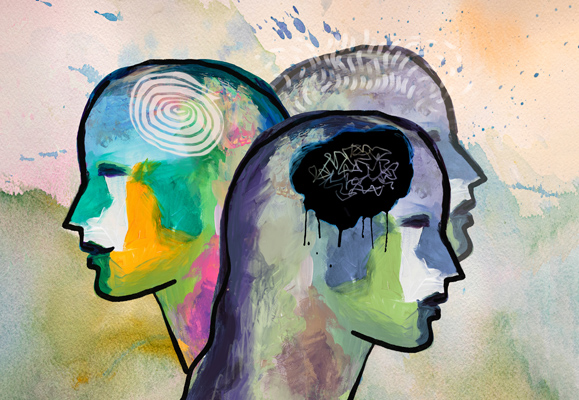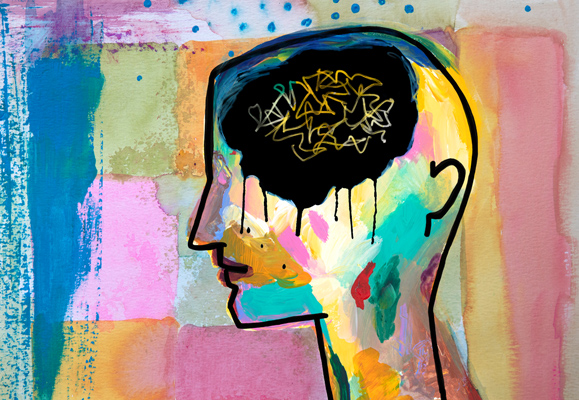Types of Trauma
Types of trauma generally falls into three categories: single-incident trauma, complex trauma, and traumatic systems. How trauma shows up in an individual is unique in its emotional and physiological manifestations.

How Trauma Affects UsDepending on the degree and severity of trauma one is experiencing the emotional and physiological affects can be mild or chronic. Some side effects of trauma can include dizziness, headaches, panic attacks, insomnia, dissociation, flashbacks, or tightness in the body.
Single-Incident Trauma
Trauma occurs when someone experiences an event that causes harm and threatens their sense of safety. This event can happen to an individual, or they can experience it happening to someone else. For example, when someone is in a car accident but has not experienced other forms of trauma, they have had a single-incident trauma.
Complex Trauma
The combination of many repeated stressors and traumas over time is called complex trauma.
People who have violent injuries have often had many other traumatic experiences. Past trauma, stress, and adversity can build up and have powerful impacts on the health of our brains and bodies. Care providers—personal and professional—need to understand complex trauma in order to help participants recover and thrive.
Trauma: A Timeline
This timeline shows the actual life experiences of one young Chiacgoan. This young person is not an exception.
Traumatic Systems
From its founding, the United States has been built on traumatic acts and systems, like violence against indigenous people and the institution of slavery. Harm has been intentionally inflicted on certain groups, most often on people of color. These harms have continued through hundreds of years of a lack of access to housing, jobs, education, and healthcare, and also through policies such as mass incarceration and other forms of forced family separation.
The cycle of violence in an individual’s life can often be traced back to these policies. For example, a person may learn to protect themselves by carrying a weapon or avoiding an unsafe school or environment. These protective measures can begin a harmful series of events. But that cycle began with the structural violence within an overarching community, not an individual choice.
Not everyone who experiences harmful systems will cause harm. People are complex and many factors play into all of our lives. Every individual has a different personality and way of coping in the world, and things like family connections, community involvement, and educational support can all shape a person’s life. But experiences like racism are traumatic in and of themselves, and contribute to complex trauma.

Most people start to feel better after a few weeks or months – physically and emotionally.
What if I don’t feel better after a few weeks or I feel more distressed as time passes? (VA)
If it’s been longer than a few months and thoughts and feelings from the trauma are upsetting you or interfering with your life (job, relationships, school, etc.) you may be experiencing a post-trauma stress reaction referred to as posttraumatic stress disorder (PTSD). PTSD can develop after you go through or see a life-threatening event.
PTSD symptoms usually start soon after the traumatic event, but they may not appear until months or years later. They also may come and go over many years. If the symptoms last longer than four weeks, cause you great distress, or interfere with your work or home life, you might have PTSD. Please reach out for help if you think this is happening to you.
The Basics of PTSD
Get a better understanding of the basics of PSTD. Information is available in Spanish and English.
The 4 Types of PTSD Symptoms
There are 4 types of PTSD symptoms, but they may not be exactly the same for everyone. Each person experiences symptoms in their own way.
Reliving the Event
This is also called re-experiencing symptoms. Memories of the traumatic event can come back at any time. They can feel very real and scary. For example:
- You may have nightmares.
- You may feel like you are going through the event again. This is called a flashback.
- You may see, hear, or smell something that causes you to relive the event. This is called a trigger. News, seeing an accident, or hearing fireworks are examples of triggers.
Avoiding Things that Remind You of the Event
You may try to avoid situations or people remind you of the trauma event. You may even avoid talking or thinking about the event. For example:
- You may avoid crowds because they feel dangerous.
- You may avoid driving if you were in a car accident or were shot while driving or riding in a car.
- If you were in an earthquake, you may avoid watching movies about earthquakes.
- You may keep very busy or avoid getting help so you don’t have to think or talk about the event.
Having More Negative Thoughts and Feelings than Before the Event
The way you think about yourself and others may become more negative because of the trauma. For example:
- You may feel numb—unable to have positive or loving feelings toward other people—and lost interest in things you used to enjoy.
- You may forget about parts of the traumatic event or not be able to talk about them.
- You may think the world is completely dangerous, and no one can be trusted.
- You may feel guilt or shame about the event, wishing you had done more to keep it from happening.
Feeling on Edge or Keyed Up
This is also called hyperarousal. You may be jittery, or always alert and on the lookout for danger. You might suddenly become angry or irritable. For example:
- You may have a hard time sleeping.
- You may find it hard to concentrate.
- You may be startled by a loud noise or surprise.
- You might act in unhealthy ways, like smoking, abusing drugs or alcohol, or driving aggressively.
Do you or someone you know need support?
If you or someone you know needs support from a mental health professional, contact HHPC staff by calling (312) 864-2735 or by emailing us.
Other Effects of Trauma on Children and Teens
Besides PTSD, children and teens that have gone through trauma often have other types of problems. Much of what we know about the effects of trauma on children comes from the research on child sexual abuse. This research shows that sexually abused children often have problems with:
- Fear, worry, sadness, anger, feeling alone and apart from others, feeling as if people are looking down on them, low self-worth, and not being able to trust others
- Behaviors such as aggression, out-of-place sexual behavior, self-harm, and abuse of drugs or alcohol
Examples of Traumatic Events
- Adverse Childhood Experiences (ACE)
- Community Violence: HHPC screens for 14 types of community violence. On average, HHPC participants have been exposed to 8 forms of community violence – before they experience the violent injury that brought them to the trauma center.
- Racial Trauma
- Intimate Partner Violence
- Sexual Assault: Sexual assault is defined as any sort of sexual activity between two or more people in which one of the people is involved against their will.
Exposure to Multiple Traumatic Experiences
People who have experienced violent injury have often times been exposed to other types of violence or traumatic experiences. While this is NOT always the case, it happens frequently enough for our participants, Healing Hurt People Chicago takes this into account in our approach to understanding of trauma and the services we provide.
Stories of Healing
Dantrell is an HHPC graduate, and currently a SELF group leader for the program. He talks about HHPC and the Project Fire program that offers a safe space for the participants to hang out with each other and a creative resource for healing and self-expression.
